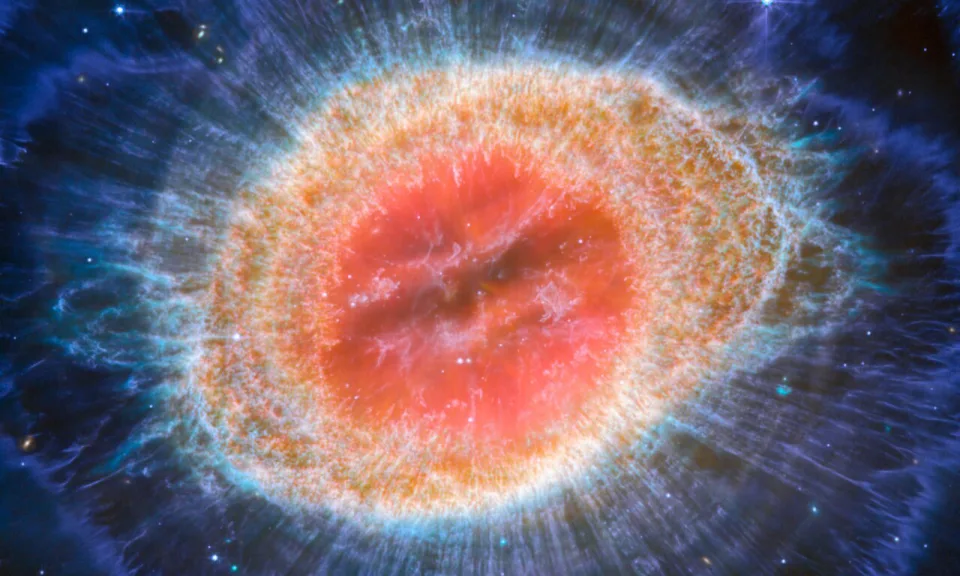Discovered in 1779 during a quest for comets, the Ring Nebula, also known as M57 or NGC 6720, has remained a prominent astronomical figure. Once mistaken as distant worlds due to its appearance, the Ring Nebula represents a celestial beauty just 2,500 light-years away from Earth.
The telescope used infrared light sensors to reveal intricate details of the galaxy
The James Webb Space Telescope (JWST) has now brought us closer to this stunning object. It’s not just a marvel to look at; the images captured by JWST give us information regarding the very process of stellar life and death.

In the new images, the NIRCam, designed to detect near-infrared light, displays the intricate details of the nebula, including 20,000 dense globules rich in molecular hydrogen. The MIRI, on the other hand, reveals around ten concentric arcs beyond the nebula’s outer edge, unfolding an astronomical puzzle.
The history of the Ring Nebula’s observation signifies more than its physical components. It’s a symbol of human curiosity and advancement. From the early misconceptions that led to its planetary nebula label to the advanced technology of JWST, our pursuit of understanding this phenomenon parallels the growth of astronomical science itself.
Today, the Ring Nebula stands as a symbol of astronomical archaeology. The colorful main ring, the remnants of a dying star on its path to becoming a white dwarf, is a vivid reminder of our cosmic connection. In studying the nebula, we’re not merely observing a distant object; we are peering into the past, present, and future of the universe itself.
RELATED:
- James Webb Space Telescope to Study the Andromeda Galaxy to Understand the Milky Way
- James Webb Space Telescope Detects Water around a Main-belt Comet
- Best Waterproof Smartwatches for Swimming in 2023 – Garmin, Polar, Samsung & More
(Via)







